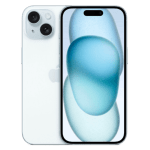For a long time, Apple has been getting a slap on the wrist for its iPhone repair policy. Basically, if you wanted to repair your iPhone, you had to go through an authorized repairer who used new official parts. Not very practical, and above all not very eco-friendly! But things are changing.
Apple has long been criticized for its policy of “serialization” of parts. This policy of pairing iPhone parts with the device itself made iPhone repair more complicated than it needed to be.
In fact, users were forced to go through an approved repairer using new official parts to repair their device.
A policy that did not favor the circular economy
This policy goes against the principles of the circular economy and the policies implemented in France and the European Union.
When a spare part was used to repair an iPhone, the device verified the identity of the part and could prevent it from functioning or display a message to the user to inform them that their device did not contain a genuine Apple part .
This practice, considered by some as an obstacle to free repair, was justified by Apple as a guarantee of the quality and safety of the parts used.
A turnaround
But good news! Apple has finally decided to change its policy. Starting this fall, you will be able to use second-hand parts to repair your iPhone. This new policy will start with the iPhone 15, and you can use second-hand parts such as a battery, screen or camera, as long as they are compatible with your device.
7 /10


And that’s not all. Apple will also make Touch ID and Face ID components reusable in another iPhone. This is an important step forward in the fight against planned obsolescence and the promotion of the circular economy.
Finally, iOS will be able to detect if a part has been changed, and especially if it comes from an iPhone that has been blocked following loss or theft using Find iPhone. This will avoid using stolen parts. The calibration step will then be blocked for this component.

You will also have access to detailed information in the iOS settings on the origin of the parts installed in your iPhone, with a history and a clear display. Which has already started since iOS 15.2.
